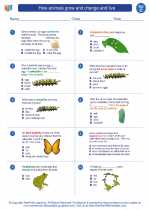Stem
The stem is a part of a plant that serves several important functions. It provides support for the plant, allowing the leaves and flowers to be elevated and receive sunlight. It also enables the transport of water, nutrients, and sugars between the roots and the rest of the plant. Additionally, the stem plays a role in the reproduction of some plants, as it can produce new shoots, roots, or flowers.
Structure of a Stem
The stem is typically composed of several layers, including the epidermis (outer layer), cortex (middle layer), and vascular tissue (inner layer). The vascular tissue consists of xylem, which transports water and nutrients from the roots to the rest of the plant, and phloem, which transports sugars produced during photosynthesis to other parts of the plant.
Types of Stems
Stems can vary in structure and function based on the type of plant. Some common types of stems include:
- Erect stems: These are straight and vertical, providing support for the plant's leaves and flowers.
- Creeping stems: These stems grow horizontally along the ground, enabling the plant to spread and take root in new areas.
- Underground stems: These stems, such as rhizomes and tubers, are located underground and serve as storage organs for the plant.
- Stolons: Also known as runners, these horizontal stems grow above the ground and can produce new plants at their nodes.
Functions of the Stem
The stem performs several important functions for the plant:
- Support: The stem provides structural support for the plant, keeping it upright and enabling the leaves and flowers to receive sunlight.
- Transport: It transports water, nutrients, and sugars between the roots and other parts of the plant through the xylem and phloem.
- Reproduction: Some stems can produce new shoots, roots, or flowers, contributing to the plant's growth and reproduction.
Study Guide
Here are some key points to remember about the stem:
- What are the main functions of the stem?
- Describe the structure of a stem and the role of each layer.
- Identify and explain the different types of stems found in plants.
- Discuss the importance of the stem in the overall growth and development of a plant.
Understanding the structure and functions of the stem is crucial for comprehending how plants grow and thrive in their environment. It is also essential for understanding the role of plants in ecosystems and their significance for human life.
.◂Science Worksheets and Study Guides Third Grade. How animals grow and change and live

 Worksheet/Answer key
Worksheet/Answer key
 Worksheet/Answer key
Worksheet/Answer key
 Worksheet/Answer key
Worksheet/Answer key
 Worksheet/Answer key
Worksheet/Answer key
 Vocabulary/Answer key
Vocabulary/Answer key
 Vocabulary/Answer key
Vocabulary/Answer key
